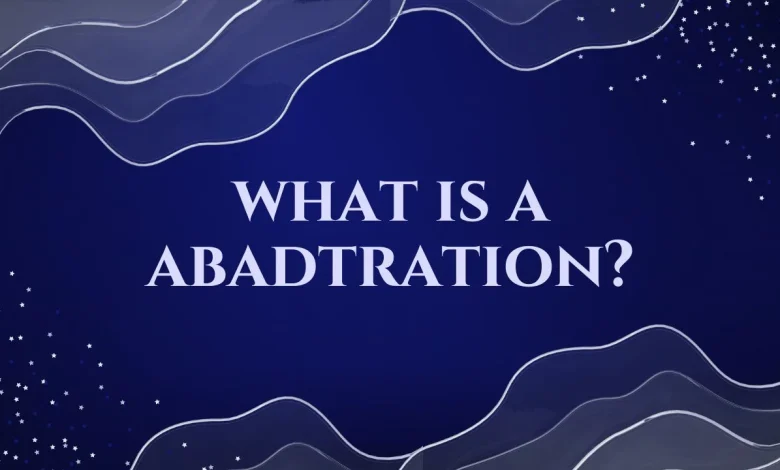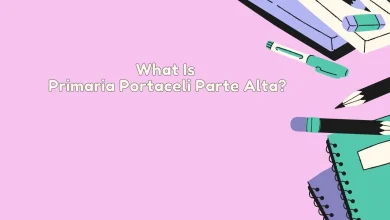What is a Abadtration?

“Abadtration” is a term that might sound unfamiliar to many. It doesn’t have a widely recognized definition in dictionaries or common usage, so it’s essential to break down what it could imply. The word itself seems to be a blend or a typo of more familiar terms like “abstraction” or “arbitration,” but since it’s not officially defined, it opens up room for interpretation.
In some contexts, it could be used to describe a complex or abstract idea, a concept that requires deep thinking to understand, or a process where two opposing ideas are brought together to find a common ground. Understanding the word involves a bit of imagination and creativity, as it’s not something you’ll find in textbooks or standard vocabulary.
How Could Abadtration Be Used?
Given its undefined nature, “abadtration” could be applied in various ways depending on the context. For instance, it might be used in creative writing to describe a concept that’s hard to grasp or pin down. In a business setting, it could refer to a unique approach to problem-solving that combines different perspectives or methods.
It could even be a term used in art to describe a work that blends different styles or genres in a way that’s difficult to categorize. The flexibility of the term allows it to be molded to fit different scenarios, making it a potentially powerful word in the right hands.
Why is Abadtration Not in the Dictionary?
One reason “abadtration” is not in the dictionary is that it might be a newly coined term or a word used in a specific niche that hasn’t gained widespread recognition. Dictionaries typically include words that are commonly used and have clear meanings. If a word is too new, too specialized, or too unclear in its meaning, it may not make it into the dictionary.
In the case of “abadtration,” it could be that the word is still in the process of being defined by those who use it. Alternatively, it might be a word that has yet to catch on with a broader audience, which is why it hasn’t been formally recognized.
What are Some Examples of Abadtration in Everyday Life?
While the word itself isn’t commonly used, the concept of “abadtration” can be seen in various aspects of daily life. For example, when two people with very different opinions come together to create a new idea that incorporates elements of both viewpoints, they are engaging in a form of “abadtration.”
In art, a painting that combines realism with abstract elements could be seen as an example. Even in technology, when a new gadget blends features from different devices to create something unique, that could be considered a form of “abadtration.” These examples show how the concept, if not the word itself, is present in many areas of life.
How Does Abadtration Relate to Other Concepts?
“Abadtration” shares similarities with concepts like “abstraction” and “arbitration.” Abstraction involves simplifying complex ideas by focusing on the most important aspects, while arbitration is a method of resolving disputes by finding a middle ground.
Abadtration could be seen as a blend of these two ideas, where complex or opposing elements are combined or simplified to create something new. It’s a way of thinking that involves seeing beyond the obvious and finding connections between things that might not seem related at first glance. This makes it a valuable concept in fields like art, philosophy, and problem-solving.
What are the Potential Benefits of Understanding What is a Abadtration?
Understanding “abadtration” could offer several benefits, especially in areas that require creative thinking or conflict resolution. By grasping the concept, one might be better equipped to approach problems from different angles and find innovative solutions. It can also help in communication, as it involves seeing and expressing ideas in ways that others might not immediately understand.
This can lead to more effective collaboration and the ability to bring together diverse viewpoints. Additionally, in fields like art or design, understanding abadtration could inspire more original and thought-provoking work, as it encourages blending and reimagining existing ideas.
What are the Challenges in Applying Abadtration?
While understanding “abadtration” can be beneficial, applying it can also present challenges. One major challenge is the lack of a clear definition, which can make it difficult to communicate the concept to others. Another challenge is the abstract nature of the idea itself, which may require a higher level of thinking and creativity than more straightforward approaches.
Additionally, since it involves blending different ideas or perspectives, there can be a risk of creating something that doesn’t fully satisfy any of the original intentions. This requires careful consideration and a willingness to experiment and refine ideas.
How Can Abadtration Be Applied in Problem-Solving?
In problem-solving, “abadtration” can be a useful tool for thinking outside the box and finding solutions that might not be immediately obvious. By combining elements from different approaches or disciplines, one can create new strategies that address problems in innovative ways.
For example, in a business setting, abadtration could involve merging traditional methods with new technologies to improve efficiency or create new products. In personal situations, it might mean finding a compromise between conflicting desires or needs. The key is to remain open to different possibilities and to be willing to explore connections between seemingly unrelated ideas.
How Might Abadtration Influence Future Trends?
As a concept, “abadtration” has the potential to influence future trends in various fields. In art and design, it could lead to the development of new styles that blend traditional and modern elements. In technology, it might inspire the creation of hybrid devices or systems that combine features from different areas.
In business, abadtration could lead to innovative strategies that bring together diverse markets or industries. As more people begin to understand and apply the concept, it could become a driving force behind new developments and ideas. The flexibility and creativity inherent in abadtration make it a powerful tool for shaping the future in unpredictable and exciting ways.
What are the Pros and Cons of Abadtration?
Here is a table that summarizes the potential pros and cons of applying the concept of abadtration:
| Pros | Cons |
|---|---|
| Encourages creativity and innovation | May be difficult to define and communicate |
| Helps in finding unique solutions | Can be challenging to implement effectively |
| Promotes collaboration between diverse ideas | Risk of diluting original intentions |
| Enhances problem-solving by merging perspectives | Requires a high level of flexibility and openness |
| Can lead to the development of new trends | Potential for creating complex or unclear outcomes |
Conclusion: What is a Abadtration?
In summary, abadtration represents a blend of ideas that can lead to new and innovative solutions, styles, and trends. Although it is not a widely recognized term, its potential applications are vast, ranging from art and design to business and technology.
The concept encourages creativity, collaboration, and open-mindedness, making it a valuable tool for anyone looking to explore new possibilities. While there are challenges in applying abadtration, such as the difficulty in defining and communicating the idea, the potential benefits make it a concept worth exploring. As more people begin to understand and use abadtration, it could become a key driver of future trends and innovations.




